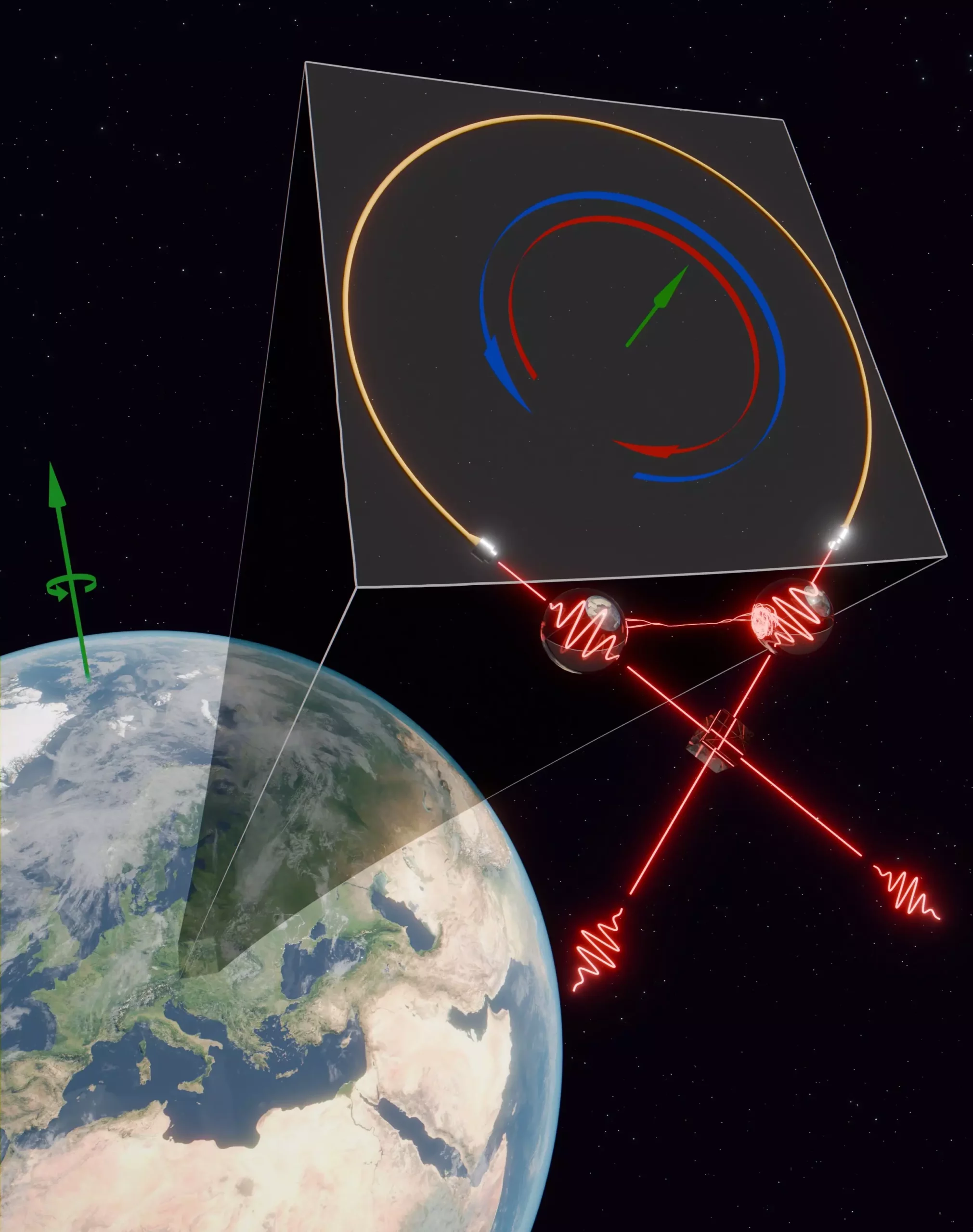In a groundbreaking experiment conducted by a team of researchers led by Philip Walther at the University of Vienna, the impact of Earth’s rotation on quantum entangled photons was measured. This pioneering work, which was recently published in Science Advances, represents a significant advancement in the field of rotation sensitivity in entanglement-based sensors. By utilizing optical Sagnac interferometers, which are known for their high sensitivity to rotations, the researchers were able to explore the intersection between quantum mechanics and general relativity, pushing the boundaries of our understanding of fundamental physics.
Optical Sagnac interferometers have played a crucial role in our understanding of fundamental physics since the early 20th century, contributing to the establishment of Einstein’s special theory of relativity. These devices are known for their unparalleled precision in measuring rotational speeds, limited only by the constraints of classical physics. However, by employing quantum entanglement in interferometers, researchers have the potential to surpass these classical limits and achieve a quantum leap in sensitivity.
One of the major hurdles in harnessing the power of quantum entanglement is the delicate nature of entangled particles. The Vienna experiment was able to address this challenge by building a large optical fiber Sagnac interferometer with low and stable noise levels, enabling the detection of high-quality entangled photon pairs. This allowed the researchers to outperform previous quantum optical Sagnac interferometers by a thousandfold, demonstrating the potential for significant advancements in rotational sensitivity.
A key aspect of the experiment involved isolating and extracting Earth’s rotation signal from the measurements. By splitting the optical fiber into two equal-length coils connected via an optical switch, the researchers were able to cancel out the rotation signal at will, effectively tricking the light into behaving as though it was in a non-rotating universe. This innovative approach extended the stability of the apparatus and enabled the observation of the impact of Earth’s rotation on a maximally entangled two-photon state.
The successful observation of the effect of Earth’s rotation on quantum entangled photons represents a significant milestone in the field of quantum mechanics and general relativity. With a thousandfold improvement in precision compared to previous experiments, this research opens up new possibilities for the development of entanglement-based sensors with enhanced rotation sensitivity. This could pave the way for future experiments that explore the behavior of quantum entanglement within the framework of curved spacetime, offering new insights into the fundamental nature of the universe.
The experiment conducted by the team at the University of Vienna represents a crucial step forward in our understanding of the relationship between Earth’s rotation and quantum entanglement. By combining cutting-edge technology with innovative experimental design, the researchers have demonstrated the potential for significant advancements in rotation sensitivity and paved the way for further exploration at the forefront of quantum mechanics and general relativity.


Leave a Reply